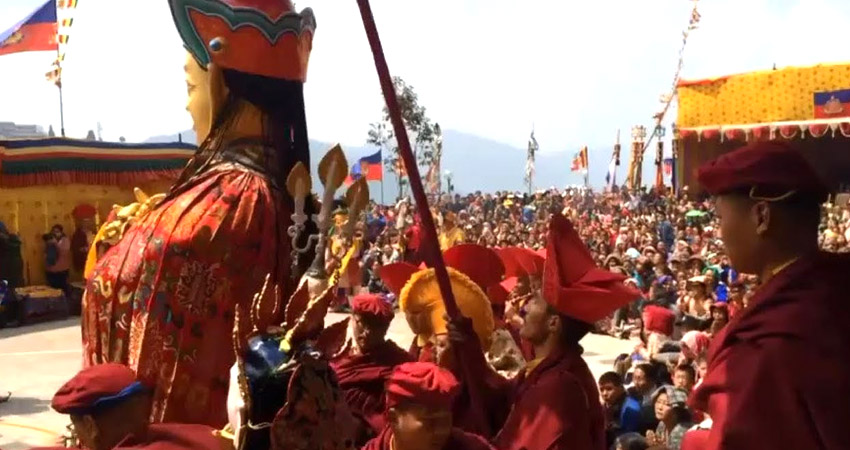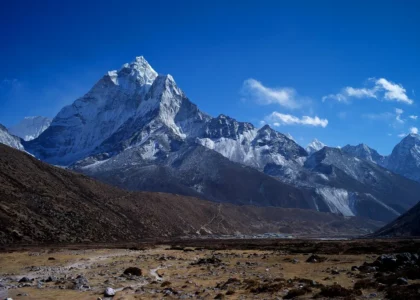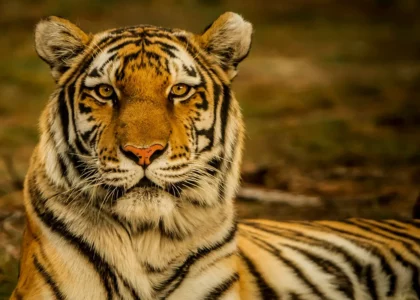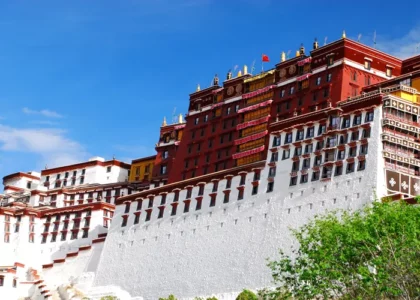Saga Dawa festival Tibet – Dates and how to travel there

Saga Dawa Festival Tibet gives you a complete spiritual experience. The festival’s main point is to pray for the long life of all holy gurus, as Buddhists believe. This entire experience leaves you with a distinct feeling of reverence and self-satisfaction.
Saga means “the fourth,” and Dawa refers to “month” in Tibetan. This festival is celebrated for the whole month and is one of the most significant. It is in Tibet and also in Nepal these days. This festival coincides with three important events in his life. Birth, nirvana, and death. It says that the Saga Dawa festival falls on the holiest month of the Tibetan calendar. The good deeds and prayers multiplied a thousandfold during this event.
Hundreds of Tibetan people circumambulate around the Barkhor. Tsekhor(Circuit around Potala), and Lingkhor. Which is one form of good deed? Tibetan people refrain from killing animals and giving out alms to needy people. During this festival, many pilgrims come to Lhasa to visit the monasteries. Take part in the ritual walk around the Lingkhor path. Being in the area during Saga Dawa is a rare opportunity. And not one that is missed too; therefore, we have this Saga Dawa Festival Tour for you.
Saga Dawa festival in Tibet is one of the best festivals.
Saga Dawa Festival Tibet Tour offers one of the ideal opportunities. You can see local people celebrating one of the most important festivals in the Tibetan lunar calendar. You will have a chance to experience this unique culture firsthand. Visitors not only get to watch and share intense Buddhist activities. They also join the prayers, Kora, and offer tips to the poor. One can spend time touring some of the monasteries of Tibet during this holy month-long festival.
Celebrations are going on all over Tibet. The Saga Dawa festival in Tibet is among the greatest and most famous. We can find it at Tarboche at the foot of Mt. Kailash. However, you will need a special permit to visit. We, “Above the Himalaya,” are experienced in this and can help you quickly get the permits without any trouble.
Saga Dawa Festival, Tibet: 2025
When should I travel for the Saga Dawa Festival in Tibet in 2025? The Saga Dawa Festival in Tibet is highly significant to all Buddhists worldwide. In Tibet, it is the most important religious celebration. The Saga Dawa Festival is observed on the fifteenth day of the fourth Tibetan lunar calendar. According to the solar calendar, the Saga Dawa Festival will be celebrated on June 4, 2025.
It is a day designated to remember the Buddha’s birth, enlightenment, and Parinirvana. The majority of Tibetans chose not to work today and shut their businesses. They go to monasteries in the morning before going on a kora, or tour, of Lhasa’s sacred area for the rest of the day.
How is Saga Dawa celebrated?
Saga Dawa is performed under the local lama’s (a spiritual guru’s) prayers. Hundreds of Saga dawa are being conducted under the prayers of the local lama, a spiritual leader. In front of it, hundreds of people sit or stand to pray. In addition, people visit Dzongyab Lukhang Park, a park close to the Potala Palace. In the late afternoon, they organize a large outdoor picnic there. People will continue to burn butter lamps at the temples. Butter lamps are just processed yak butter or oil in a vase with a burner. The lamps provide a smoky light.
In the Tibetan Buddhist tradition, many lights benefit from meditation and mind-focusing. Drums and cymbals, often used in Tibetan rituals, were played as accompaniments to draw on the spirits or drive away evil. A local lama, a spiritual leader, will be present to bless the upcoming year. Local devotees give alms to the monastery, which accepts them in any form one may afford.
The most significant element of the event was replacing the “Tarboche flagpole” when it was taken down, and a new one was erected in its place. The prayer flagpole is a tall pole from which hundreds or perhaps thousands of prayer flags in various colors are strung. All residents and visitors observe the pole replacement ceremony with fascination and amusement.
Each prayer flag indicates a wish for the prayer to be granted. The flags can flutter to improve the likelihood of someone responding. According to a legend, Tibet is in trouble if the pole is not properly uprighted. Therefore, it is crucial to set up the pole correctly. Only the best pole-sitter is authorized to carry out the task. If it is put up correctly, people feel pleased and relieved.
Moreover, it is the best place to see colorful native costumes during the festival. Anytime they have a free hand, they carry a small, portable prayer wheel attached to a stick and spin it. Local tea shops provide a respite from the constant battering of inhospitable natural elements. The region’s craggy cliffs and tall, snow-capped mountain peaks add to the rough beauty of the landscape and enhance the spectacle of the Tibetans performing their religious rituals.
Where is Saga Dawa celebrated?
Tibetans in Lhasa celebrate the Saga Dawa festival in Tibet at the base of the Potala until late in the day. In reality, the Tibetans now perform this as part of an annual ceremony. Every year on this day, the people will dress, sing, dance, have a picnic, or unite in Linkor.
The Saga Dawa Festival Tibet is also held on Mt. Kailash, Tibet’s holiest peak, in addition to Lhasa. During the Saga Dawa Festival in Tibet, tens of thousands of Tibetan Buddhists would visit the sacred mountain. In addition, destinations during this holy holiday vary according to the people and their preferences, to mention a few:
Jokhang Temple: Kora, monk chanting, and rituals
Potala Palace: Tibetan Buddhists come from all places to perform rituals, Kora, and chanting
Lhasa Lake: Rituals, Fish Freedom, and Other Things
Mount Kailash: Rituals for raising flagpoles and a 3-day kora
Lake Manasarovar: holy bath, walk for worship, and more
Why is Saga Dawa celebrated?
Why is the Saga Dawa festival celebrated by so many Tibetans and by Buddhist prayers? The Saga Dawa Festival Tibet is a traditional event in Tibetan Buddhism that takes place in the fourth lunar month. It’s because the Buddha attained enlightenment on the fourth day of the full moon in the month of his birth.
The Saga Dawa festival in Tibet is also known as bulgur Dawa, which translates to “merits multiplied by a hundred thousand times.” So, it is also regarded as the month of merit and prosperity. Tibetan Buddhists worldwide make additional efforts to practice the Path to Enlightenment, charity, and kindness to increase their positive merits and eliminate their bad karma.
The primary purpose of the celebration is to pray and commemorate Buddha and his acts. The event is mainly dominated by religious activities like cham dancing and monks chanting at monasteries.
The festival is also known in Chinese as “Qiong Ren Jie” (The Poor’s Day). This refers to the Day of the Poor due to the Tibetan people’s well-known kindness to the underprivileged. At the same time, it is for preserving and propagating Buddha’s teachings in the minds of all sentient creatures for world peace. Moreover, many believers claim that the festival season’s primary purpose is to pray for the long lives of all the holy gurus from all religions.
History of the Saga Dawa Festival
The Saga Dawa Festival celebrates Buddha’s enlightenment. According to Buddhist history, when Buddha was near death, he advised one of his disciples to live up to his teachings about leading a noble life and being kind and compassionate rather than simply honoring him with flowers, incense, and lights when he passed away.
Instead of mourning his passing, he reminded people that all composite things, including the human body, must inevitably degrade. In various Buddhist regions, people celebrate the occasion in diverse ways, on different days, and according to their customs and traditions.
Saga Dawa is one of the most important holidays, and it is observed for a month during this festival. However, the fifteenth day of the month is particularly significant since it marks the birth of Sakyamuni, his enlightenment (Nirvana), and his journey into Parinirvana (death). Tibetans think they will gain much merit on that specific day by being generous, abstaining from eating meat, and taking other actions.
People go vegetarian for one month to prepare for the Saga Dawa festival. Thus, a large number of Tibetans avoid animal killing throughout the month. Some people bow down before monasteries, others throughout Lhasa, while others chant more. Tibetans observe this day as Buddha’s birthday and the day he attained enlightenment and passed away.
The Sanskrit term Vaisakha, also known as Vesakha or Vesak, is how the day is known to many Buddhists worldwide. In 1950, the First Conference of the World Fellowship of Buddhists advocated declaring the day of the lunar month’s full moon to celebrate Buddha. Although the holiday is still observed on various dates worldwide, many people view it as the most meaningful Buddhist feast day.
Saga Dawa for Visitors
Everyone engaged in the Saga Dawa Festival, even the visitors, experiences a very spiritual experience. Since the significant purpose of the event is to pray, there is a certain aura of respect throughout the festivities.
You are about to go on a journey around Mount Kailash in Tibet, one of the holiest destinations in the world for Buddhists, Hindus, Jains, and Bons. Additionally, you will show up or attend at a fortunate time. A saga Dawa celebration is being held to commemorate the Buddha’s birth, enlightenment, and demise. An essential part of the celebration is the “Tarboche flagpole.” New prayer flags are given by pilgrims each year to replace the worn-out ones on the pole.
It is lowered, the flags are switched, and the pole is raised under the guidance of the lama of the nearby monastery. The pole must stand straight when it is presented, which is crucial. For Tibet, this foretells a fruitful year.
The pilgrims come from various parts of India, Nepal, and Tibet. Others travel by bus or vehicle, while others stroll. Few people enter by prostrating, which is done by touching their head, throat, and heart with their two hands. Afterward, feel the earth with your forehead while on your hands and knees. These actions are taken out of respect for the Buddha, his teachings, and the wider spiritual world.
Many people will only make a kora or round of Mount Kailash alone after receiving blessings and prayers from monks or during a puja. At the same time, some may prostrate the entire way, which might take up to two weeks, and most travel on foot, which can take up to three days. All this is done to bring good fortune and make amends for lifetime sins.
The Kora is conducted on Mount Kailash, the holy mountain in Tibet.
Moreover, tourists may participate in this event by joining the Kora in prayers and witnessing and experiencing severe Buddhist rituals. They can also give tips to the less privileged (poor) on conveying happiness and kindness. Later in the month-long celebration, they can explore some of Tibet’s monasteries.
Mount Kailash is located in the Ngari Region, in the westernmost part of Tibet, near the Nepali border. It is the area’s tallest mountain, rising to 6,638 meters. Every year at Saga Dawa, the Kora is conducted on Mount Kailash, the holy mountain in Tibet.
The route to Kailash is difficult and drawn out, taking travelers through a remote area that frequently resembles the high-altitude Wild West. Tourists are drawn to this location because it resonates with spiritual energy through limitless tranquility. They experience Tibet as being holy, pure, and enigmatic.
Traveling to Kailash should be pretty simple as long as you have the appropriate paperwork, a guide, and a vehicle. Since tourists are forbidden to go alone in Tibet, everyone visiting Kailash must reserve a trip through a reputable travel agency. They will arrange for your Tibet Travel Permit and Military Permit to provide you entry to the region.
Enjoy the traditional rituals.
Watching the traditional rituals with your own eyes will be a treat, and being involved with them is like getting positive energy yourself. In addition to this, the view of the surroundings will be a blessing. The Sunkoshi River, which has the color of jade, originates in Tibet and is a component of Nepal’s Koshi or Saptkoshi river system. This trek traverses it.
Then, you must obtain authorization to cross to the Tibetan side at the Nepalese border checkpoint known as Kodari. A crossing between Zhangmu and Kodari has been in use since 1968. However, it is being repaired after being completely devastated by the April 2015 Nepal earthquake.
You will see Tibetan holy “mani wheels” that have prayers or mantras written within. They are physically spun around to create air movement to send the wishes for a safe return home higher into the skies. You will see several yak horns connected in front of them. They believed that yak horns warded off evil spirits. The surroundings are desolate, rocky, and barren. You will travel past the equally beautiful Mansarovar Lake.
Furthermore, camping beneath Kailash’s face can be seen through the transparent window from you. You will have a divine experience on a spectacular moon night that lasts until the early morning. Seeing Mount Kailash glow gold as it is exposed to the morning sun’s first rays will make you feel like life is providing energy. The four faces of Mount Kailash each have their distinct beauty, traits, moods, and auras.
The significance of Mount Kailash in the Saga Dawa Festival
The height of Mount Kailash, also known as “Kailasa” in Sanskrit, is approximately 6638 meters (21778 feet). It is the highest peak in China’s most rocky mountain range, the Kailash, part of the Tibet autonomous area. It is also called the entrance to paradise and redemption from sin.
The lakes Manasarover and Rakshasal are close to the mountain. Additionally, it is not far from the sources of several of Asia’s longest rivers, including the Indus, Karnali, Sutlej, and Brahmaputra. Four main religions—Hinduism, Buddhism, Jainism, and Bon—consider Mount Kailash an extremely holy place. Due to Mount Kailash’s significance to religion, climbing it is forbidden.
A tradition dating back thousands of years is the circumambulation of Mount Kailash during the Saga Dawa festival. This is a 52-kilometer (32-mile) long, strenuous walk at a high altitude. Hindus and Buddhists do the parikrama, also known as the Kailash Kora, in a clockwise route, whereas Jainists and Bonpos do it the other way around.
One of the most prominent pilgrimages in Asia is the Kora around Mount Kailash. One Kora is thought to atone for sins committed during this lifetime. Meanwhile, 108 koras guarantee nirvana after death and end the cycle of reincarnation.
According to legend, the north face of Mount Kailash is more significant and exhibits a protective aspect through its meticulous, conservative, and forbidding nature. The calling of Kailash is also supposed to become all-consuming at that point, and all efforts are directed at Mount Kailash. It is a once-in-a-lifetime chance to purify the body, mind, and spirit. The toll it has on one’s physical, mental, emotional, and spiritual health during the experience and culmination of it Is a rebirthing through purification.
Saga Dawa Festival Tibet Tour – Trip Info
Tour Duration: 15 days
Joining in: Tibet
Trip Grade: Difficult
Maximum Altitude: (5,245m)
Best time: Autumn (August, Sept, Oct), spring (March, April), summer (May, June, July)
Guide: Government-certified tour & trekking Guide
Lodging: Twin sharing a guest house/hotel accommodation in a private room. During the trekking and sleeping in the tent, a single supplement will be available for a separate supplement fee.
Food: Breakfasts, Lunch and dinners (typical Tibetan cuisine )
Detailed Itinerary of Saga Dawa Festival Tibet Tour
Day 01: – Welcome to Kathmandu Airport
We will be at the airport for your convenience to greet you and transfer you to your desired Hotel. As you become comfortable and freshen up after your long journey, you will be asked to visit our office for a briefing about your program. You will meet with your trekking Guide to discuss the equipment needed, and we will process the trekking permits. If you arrive at night, we will have the same discussion the following day after breakfast.
Day 02 – A full-day sightseeing tour of Kathmandu Valley:
After breakfast, our Guide will accompany you on a sightseeing tour around the Kathmandu Valley. You will visit the Hindu temple complex at Pashupatinath (a UNESCO World Heritage site) and the biggest Buddhist Stupa at Boudhanath. You will also see Swyambhunath, a 2000-year-old temple popularly known as the Monkey Temple. Moreover, you will enjoy Patan City, which is famous for its fine arts and historical architecture, back to the Hotel.
Day 03 – Kathmandu Fly to Lhasa
Upon your arrival in Lhasa, a cultural city in Tibet, we will meet our Tibetan Guide at the airport and transfer you to your Hotel. Taking it to show the rest of today, you can adjust to the altitude easier and quicker. We should drink plenty of water and get plenty of sleep to prepare for the long overnight journey at the Hotel.
Day 04: – In Lhasa Sightseeing
Today, on our Saga Dawa festival Tibet tour, you will visit Lhasa, including Potala Palace, the oldest palace of the Dalai Lama, the first Buddhist temple of Tibet, Jokhang Temple, and Barkhor Market, the traditional Tibetan market. Overnight at the Hotel.
Day 05 – Lhasa Via Gyantse(3,950m) to Shigatse(3,900m) 360km
After breakfast, drive to Gyantse to visit Yamdruk Tso Lake. Enjoy the visit, which covers major highlights, and continue your drive to Shigatse. Overnight at the Hotel. Today, you will explore Khumbum Chorten, Pelkhor Monastery, and Tashilumpu Monasteryotel.
Day 06 – Shigatse Via Lhatse to Saga (4,450m) 495km
After breakfast, the drive mostly bypasses typical Tibetan settlements along the road; along the road, this area is also known as nomad land with a Himalayan background. Overnight at Guest House.
Day 06 – Shigatse Via Lhatse to Saga (4,450m) 495km
After breakfast at our Saga Dawa Festival in Tibet, we leave for Tarchen (the beginning stage of Kailash Parikrama). It is one of the most energizing days strolling along the beautiful rough bluffs; waterfalls with a few veils of the mist-liberated blue sky make you feel that Great God Shiva is all over the place with massive amounts of gifts for you. From time to time, we will start seeing Mount Kailash.
Day 07 – Saga to Mansoravar( 4,590m)277km
After breakfast, you will have a long drive as we pass Paryang, a small Tibetan town, and continue to Mansarovar Lake. Enjoy exploring the Holy Lake in Tibet on a full moon day. Overnight at the Guest House.
Day 08 – Mansoravar to Darchen (4,575m) 44km
After completing the memorable morning bath and worship, Mansarovar is the lake of compassion, tranquility, and bliss. We will be heading towards Darchen on our Saga Dawa Festival Tibet tour. It is considered a base camp for the Holy Kailash Parikrama. Overnight at Guest House.
Day 09 – Darchen to Dirapuk 13km.
Walking along the beautiful rocky cliffs in our Saga Dawa festival Tibet tour is one of the most exciting days. See the waterfalls with some clouds in the clear blue sky, making you feel that the Great God Shiva is everywhere with tons of blessings for you. From time to time, Kailash Parbat’s face will keep appearing. Overnight at Guest House.
Day 10: – Dirapuk to Zuthulphuk by crossing Dolma La Pass(5,613m)
Today is the highlight day for our Saga Dawa Festival Tibet tour. We will cross the Dolma-La pass between two valleys. Yamasthal should be crossed to reach the Shiva while your steps go closer to the pass. You will be rewarded with the best view of the Kailash—Trek down from the top of the pass by passing Parvati Kunda. By late afternoon, we will have reached Zuthulphuk.
The tremendous ascetic Milerappa is supposed to have performed miracles here. The incredible parsimonious Milerappa should have performed supernatural occurrences here). Overnight at Guest House.
Day 11: – Kailash Parikrama and drive back to Saga 450km
After walking for 3 hours, the entire driving crew will await your arrival. Today, you will leave the holy palace. By late afternoon, you will have reached Saga.
Day 12: – Saga to Kerung(2,800m)375km
After breakfast, drive to Kerung and overnight at the Hotel.
Day 13: – Kernug to Kathmandu (1,310m) 165km
After breakfast, drive to Kathmandu. After your Saga Dawa Festival Tibet tour, process the necessary formalities at the Nepal-Tibet border. Overnight at your Hotel.
Day 14 – Kathmandu free day.
Today is a free day in Kathmandu. You can go shopping, look around Thamel, And visit Dreams of Gardens. In the evening, we will have a farewell dinner.
Day 15: – Final Departure Airport
Today is free or at the last minute for your Saga Dawa Festival Tibet tour. You have a few hours of unique shopping for your relatives. If you have more time, you can go shopping or sightseeing. We will drop you off at the international airport for your home flight. We wish you a safe journey.
Best Price Guaranteed, Easy to change Date, Instant Confirmation
Book This Trip Have Questions?
Have Questions?Talk to Expert
Meet Mr. Purushotam Timalsena (Puru), Nepal's best trek and tour organizer, who has been working in the Himalayas for more than 24 years.
WhatsApp/Viber +977 98510 95 800











